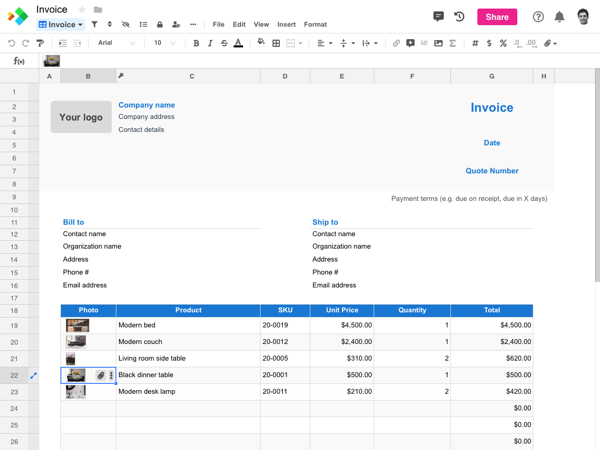Table of Contents
- In the ever-evolving landscape of e-commerce, where digital experiences often dominate, a surprising yet effective tool has emerged as a secret weapon for many online retailers
- Print in a Digital World
- Customer Engagement
- Showcasing Product Range
- Cross-Promotion and Brand Building
- Personalization
- Driving Online Traffic
- Tracking and Analytics
- Niche Markets and Customer Segmentation
In the ever-evolving landscape of e-commerce, where digital experiences often dominate, a surprising yet effective tool has emerged as a secret weapon for many online retailers
catalogs. While it might seem counterintuitive for digital-first businesses to invest in print, catalogs have proven to be a potent tool for driving sales, engaging customers and building brand loyalty. In this article, we will delve into the strategies and tactics that online retailers employ to harness the power of catalogs in the world of e-commerce.
In today’s digital-dominated world, the resurgence of print catalogs as a strategic tool for online retailers is a testament to their enduring effectiveness in the e-commerce landscape. Contrary to initial assumptions, the marriage of digital-first businesses with traditional print catalogs has not only been successful but has also unlocked significant benefits. Let’s delve deeper into the strategies and tactics employed by online retailers to harness the potent power of catalogs in e-commerce:
1. Seamless Multichannel Integration: Online retailers recognize the importance of offering a seamless transition between digital and print experiences. Catalogs often serve as an extension of their online presence, featuring QR codes, personalized URLs or specific landing pages that bridge the gap between the physical catalog and the online store. This integration ensures that customers can effortlessly switch between channels while maintaining consistency in their shopping journey.
2. Personalization and Data-Driven Insights: Leveraging the wealth of customer data available from online interactions, retailers create personalized catalogs that cater to individual preferences and purchase history. Tailored content and product recommendations enhance relevance and engagement, increasing the likelihood of conversion. Advanced analytics also allow retailers to track the impact of catalogs on online sales, providing valuable insights for future campaigns.
3. Storytelling and Brand Building: Catalogs offer a unique canvas for online retailers to tell their brand’s story and convey their value proposition. Rich visuals, compelling narratives and curated product assortments create a sensory experience that fosters emotional connections with customers. These catalogs serve as tangible brand ambassadors, reinforcing brand identity and loyalty.
4. Tangible Product Discovery: While online shopping provides convenience, catalogs offer a tactile and leisurely way for customers to discover new products. Customers can browse through pages, flag items of interest and revisit them at their own pace. This hands-on approach enhances product discovery, which may not be as spontaneous in the digital realm.
5. Catalog as a Seasonal Event: Online retailers often treat the release of a catalog as a seasonal event, generating excitement and anticipation among customers. Limited-time offers, exclusive promotions and thematic collections featured in catalogs create a sense of urgency and encourage customers to explore the latest offerings.
6. Elevated Photography and Design: The visual appeal of catalogs cannot be understated. Online retailers invest in high-quality photography and design to showcase their products in the best light possible. Striking visuals capture attention and convey the quality and value of the merchandise.
7. Targeted Distribution: Online retailers are strategic in distributing catalogs to their target audience. They may employ a combination of direct mail, email campaigns and social media to reach existing customers and prospects. This targeted approach ensures that catalogs land in the hands of individuals most likely to convert.
8. Measurable ROI: Far from being a shot in the dark, online retailers track the ROI of catalog campaigns diligently. They measure response rates, conversion rates and customer acquisition costs, allowing them to assess the effectiveness of catalog initiatives and refine their strategies accordingly.
In conclusion, the resurgence of catalogs in the realm of e-commerce is a testament to their enduring value as a strategic tool. Online retailers recognize that catalogs offer a unique opportunity to engage customers, build brand loyalty and drive sales. By seamlessly integrating print with digital, personalizing content and leveraging the tactile and visual appeal of catalogs, these businesses are harnessing the best of both worlds to create memorable and effective shopping experiences for their customers.
For a comprehensive look at this subject, we invite you to read more on this dedicated page: 20 Best Freelance SEO Keyword Researchers For Hire Near Denver …

Print in a Digital World
In the digital age, it’s easy to overlook the enduring appeal of print. However, catalogs offer a unique and tactile shopping experience that complements the convenience of online retail. Let’s explore how catalogs fit into the e-commerce puzzle:
In the digital age, where screens dominate our daily interactions, it’s tempting to underestimate the enduring allure of print. However, catalogs persist as a testament to the timeless art of tactile shopping experiences and they play a vital role that seamlessly complements the convenience of online retail. Here’s a deeper exploration of how catalogs fit into the ever-evolving e-commerce puzzle:
Tangible Engagement: Catalogs offer a tactile engagement that digital platforms cannot replicate. The physicality of turning pages, feeling the paper and examining high-quality imagery creates a sensory connection with products that goes beyond the virtual realm. This sensory experience is particularly valuable for products like clothing, home decor or luxury items where touch and visual appeal matter.
Unplugged Serenity: Amid the constant digital buzz, catalogs provide a respite for those seeking a serene and unplugged shopping experience. They allow customers to step away from screens, reduce digital fatigue and immerse themselves in a tranquil browsing journey. This tranquility can lead to more focused and enjoyable shopping sessions.
Offline Inspiration: Catalogs often serve as sources of inspiration. Customers can peruse a catalog’s pages to discover new trends, styles and products they might not have encountered online. The physical presence of a catalog encourages serendipitous discoveries, sparking creativity and exploration.
Enhanced Product Presentation: Catalogs excel at showcasing products in an aesthetically pleasing and curated manner. Brands can control the layout, design and narrative flow to create compelling visual stories. This artistic presentation elevates the perceived value of products and enhances their desirability.
Brand Storytelling: Catalogs offer a canvas for brand storytelling. Through carefully crafted content, images and descriptions, brands can convey their values, heritage and unique selling points. This storytelling fosters a deeper emotional connection with customers, influencing brand loyalty.
Cross-Channel Synergy: Catalogs seamlessly integrate with digital channels to create a holistic shopping experience. Customers often use catalogs as references before making online purchases, leveraging the best of both worlds. QR codes or personalized URLs in catalogs bridge the gap between print and digital, driving traffic to e-commerce websites.
Accessibility and Reach: Catalogs extend brand accessibility. They can be distributed to a broad audience, including individuals who may not regularly engage with digital platforms. This broad reach allows brands to tap into demographic segments that prefer or have limited access to online shopping.
Sustainability Focus: Modern catalogs are increasingly aligned with sustainability goals. Brands use eco-friendly materials and printing practices to minimize their environmental impact. Customers appreciate this commitment to sustainability, aligning their values with the brands they choose to support.
Measurable Impact: While catalogs are physical, their impact can be tracked. Brands can use unique codes or URLs to monitor catalog-driven sales, allowing for data-driven insights into their effectiveness. This measurability helps refine catalog strategies and optimize ROI.
Collector’s Appeal: Some customers view catalogs as collectibles. They may keep catalogs as references, for future inspiration or as mementos. This collector’s appeal enhances brand memorability and customer retention.
In conclusion, catalogs carve out a unique niche in the e-commerce landscape, offering a tangible, immersive and creatively curated shopping experience. In a world dominated by screens, catalogs provide a refreshing alternative that enriches the overall shopping journey. By embracing both the digital and the physical, brands can create a harmonious and multi-dimensional e-commerce ecosystem that caters to the diverse preferences and needs of their customers.
Looking for more insights? You’ll find them right here in our extended coverage: Why Catalogs Are Making a Comeback

Customer Engagement
Catalogs are more than just product listings; they are immersive experiences. Online retailers use catalogs to create visually appealing, story-driven narratives that draw customers into their brand universe. The act of flipping through pages, circling items and taking notes provides a level of engagement that a web page or app can’t quite replicate.
Catalogs are more than just product listings; they are immersive experiences that transport customers into a captivating brand universe. Online retailers have recognized the power of catalogs to create visually appealing, story-driven narratives that go beyond mere shopping and truly engage the audience.
Imagine entering the world of a high-end outdoor adventure brand through their catalog. As you flip through its pages, you’re not just scrolling through product images; you’re embarking on a journey. Each page unfolds a new chapter in the story of exploration and discovery. The use of breathtaking landscapes, adventurous narratives and rugged product shots immerses you in the brand’s ethos. You can almost feel the thrill of climbing a mountain or setting up camp in the wilderness. This sensory experience awakens your inner adventurer and deepens your connection with the brand.
Similarly, a catalog from a luxury fashion house is more than just a collection of garments; it’s an artful expression of style and elegance. The carefully curated layouts, exquisite photography and eloquent descriptions transform each page into a piece of high-fashion artwork. As you immerse yourself in the catalog, you’re not just shopping; you’re exploring the brand’s vision of beauty and sophistication. The act of circling items and taking notes becomes a creative process, allowing you to curate your own fashion story within the brand’s narrative.
What sets catalogs apart from web pages or apps is the tactile experience they offer. The physicality of holding a catalog, the texture of its pages and the sensation of flipping through them engage your senses in a way that a digital screen cannot replicate. It’s a deliberate and unhurried process that encourages mindfulness. This tactile engagement is especially powerful in an era where digital content often leads to information overload and screen fatigue.
Moreover, the act of circling items and taking notes in a catalog adds a layer of personalization to the shopping experience. It’s akin to crafting a wish list or a vision board, allowing you to express your preferences and aspirations. This personal touch creates a sense of ownership and involvement, making the catalog more than just a marketing tool; it becomes a collaborative canvas where you and the brand co-create your shopping journey.
In a world inundated with digital content, catalogs stand as a testament to the enduring appeal of physical experiences. They offer a refuge from the fast-paced digital realm, inviting customers to slow down, savor the moment and immerse themselves in a brand’s world. In this way, catalogs are not just shopping tools; they are portals to imagination, inspiration and a deeper connection with the brands that craft them.
Should you desire more in-depth information, it’s available for your perusal on this page: Adapting to the next normal in retail: The customer experience …

Showcasing Product Range
For online retailers with extensive product catalogs, print offers an efficient way to showcase their entire range. While websites often require customers to navigate through menus and search filters, catalogs present products in a curated and comprehensive format, allowing customers to explore at their own pace.
For online retailers with vast and diverse product catalogs, the strategic use of print materials offers an efficient and complementary approach to showcasing their extensive range. While digital platforms such as websites are undoubtedly convenient, they come with navigation challenges, search filters and the potential for information overload. In this context, catalogs play a crucial role by providing customers with a curated and comprehensive format for product exploration, enabling them to engage with the brand in a more deliberate and enjoyable manner.
1. Simplified Browsing: Catalogs distill a retailer’s product offerings into a visually appealing and easy-to-browse format. They eliminate the need for customers to navigate complex menus or scroll through endless web pages. Instead, shoppers can flip through the catalog, allowing them to quickly and intuitively scan through products and categories.
2. Tangible Engagement: The physicality of a catalog offers a tactile and immersive shopping experience that digital platforms can’t replicate. Customers can hold the catalog, flip through pages and mark items of interest. This tactile engagement fosters a sense of connection with the products and the brand, making the shopping experience more memorable.
3. Curated Presentation: Catalogs provide retailers with the opportunity to curate their product selection creatively. Products can be grouped thematically, seasonally or based on customer preferences. This curated presentation can guide customers through a thoughtfully designed shopping journey, highlighting key items and complementary products.
4. Reduced Decision Fatigue: The abundance of choices on a website can sometimes lead to decision fatigue, where customers become overwhelmed by options. Catalogs, on the other hand, simplify the decision-making process by presenting a manageable selection. This can alleviate the stress associated with making choices and enhance the shopping experience.
5. Offline Convenience: Catalogs extend the shopping experience beyond the online world. Customers can peruse catalogs at their leisure, whether it’s during a quiet evening at home or while traveling. This offline convenience allows for a more relaxed and unhurried exploration of products, which can lead to more thoughtful purchasing decisions.
6. Supporting Online Sales: Catalogs seamlessly integrate with a retailer’s online presence. They often include website URLs, QR codes or product codes that direct customers to the corresponding online listings. This integration ensures that customers can transition seamlessly from the physical catalog to the online store when they are ready to make a purchase.
7. Targeted Marketing: Catalogs can be highly targeted to specific customer segments or demographics. This personalization ensures that customers receive catalogs featuring products that align with their interests and preferences, increasing the likelihood of conversion.
In conclusion, catalogs serve as a valuable complement to the online shopping experience, particularly for online retailers with extensive product catalogs. They simplify browsing, offer tactile engagement and provide a curated presentation that enhances the customer journey. In an age where digital options abound, catalogs offer a refreshing and strategic approach to showcasing products, engaging customers and driving sales in a deliberate and customer-centric manner.
Explore this link for a more extensive examination of the topic: Digital Catalogs in Ecommerce: Why B2B Sellers Need an Online …

Cross-Promotion and Brand Building
Catalogs serve as cross-promotional tools, highlighting related or complementary products. This encourages customers to discover additional items they might not have found online. Moreover, catalogs contribute to brand building by reinforcing a consistent brand identity across all touchpoints.
Catalogs play a pivotal role as cross-promotional tools in marketing strategies, effectively boosting sales and reinforcing brand identity. This dual function is instrumental in engaging customers and creating a holistic brand experience. Let’s delve deeper into how catalogs excel in cross-promotion and brand building:
Cross-Promotion for Upselling: Catalogs are adept at showcasing related or complementary products alongside the main offerings. By strategically placing these items throughout the catalog, businesses encourage customers to explore additional options and consider upselling opportunities. For example, a clothing catalog might cross-promote matching accessories or shoes, enticing customers to complete their outfits.
Discovery of Unplanned Purchases: Customers often come to online or physical stores with a specific purchase in mind. However, catalogs can introduce them to products they hadn’t initially considered. This element of serendipity can lead to unplanned purchases, contributing to increased revenue and customer satisfaction.
Enhanced Customer Experience: Catalogs create a tactile and immersive shopping experience that goes beyond the transactional nature of online shopping. As customers flip through the pages, they encounter a curated selection of products and stories that engage them on a deeper level. This emotional connection can lead to more significant and long-lasting relationships with the brand.
Strengthening Brand Identity: Catalogs play a crucial role in brand building by adhering to and reinforcing a consistent brand identity. From the design and imagery to the messaging and storytelling, catalogs embody the brand’s values, aesthetics and personality. This consistency contributes to brand recognition and loyalty.
Brand Storytelling: Catalogs provide a platform for brand storytelling. They can narrate the brand’s journey, mission and values, helping customers connect with the brand on a personal level. Through storytelling, catalogs create a memorable brand experience that extends beyond product features and prices.
Physical Brand Presence: Catalogs represent a physical manifestation of the brand, reinforcing its presence in customers’ lives. The tangible nature of catalogs allows customers to interact with the brand in a way that digital media cannot replicate. This physicality can leave a lasting impression and foster a sense of trust.
Multi-Channel Engagement: Catalogs can seamlessly integrate with other marketing channels, including online and social media. Businesses can use QR codes, personalized URLs (PURLs) or unique promo codes in catalogs to drive traffic to digital platforms for further engagement. This multi-channel approach enhances customer interactions.
Audience Segmentation: Catalogs can be tailored to specific audience segments, ensuring that cross-promotions resonate with each group’s interests and preferences. This targeted approach increases the effectiveness of cross-promotional efforts and drives higher conversion rates.
Measurable Impact: Catalogs enable businesses to track the impact of cross-promotions through data analysis. By measuring the response rates and sales attributed to specific cross-promotions, companies can refine their strategies for optimal results.
In summary, catalogs serve as versatile tools for cross-promotion and brand building. They facilitate the discovery of complementary products, enhance the customer experience and provide a tangible representation of the brand’s identity. Through strategic cross-promotions and consistent brand messaging, catalogs not only boost sales but also foster brand loyalty and recognition, contributing to the overall success and growth of businesses.
Don’t stop here; you can continue your exploration by following this link for more details: Amazon marketing strategy business case study | Smart Insights

Personalization
Online retailers are masters of data-driven personalization and this extends to their catalogs. By leveraging customer data and purchase history, businesses create catalogs tailored to individual preferences. Personalized product recommendations enhance the relevance of the catalog and increase the likelihood of conversion.
The era of online retail has ushered in a new age of data-driven personalization and it’s fascinating to witness how this precision extends seamlessly into the world of catalogs. Here’s a deeper exploration of how online retailers harness the power of data to craft catalogs that resonate on a deeply personal level with their customers:
Harnessing Customer Data: Online retailers are privy to a treasure trove of customer data. From browsing behavior and past purchases to demographic information and preferences, this wealth of data forms the foundation of personalized catalogs. Retailers use sophisticated algorithms and analytics tools to extract meaningful insights from this data, gaining a nuanced understanding of each customer’s unique preferences and tendencies.
Creating Tailored Catalogs: Armed with this invaluable knowledge, businesses curate catalogs that are tailor-made for individual customers. No longer one-size-fits-all, these catalogs are precision-crafted to include products that align with each customer’s past interactions and interests. For example, if a customer has a history of purchasing outdoor gear, their personalized catalog may emphasize hiking equipment, camping gear and related products.
Dynamic Product Recommendations: The heart of personalized catalogs lies in dynamic product recommendations. These intelligent systems analyze a customer’s purchase history and browsing habits to suggest products that are not only relevant but also enticing. Such recommendations not only guide customers toward items they are more likely to buy but also introduce them to new products they might not have discovered otherwise.
Tailoring Beyond Product Selection: Personalization extends beyond product recommendations. Catalogs can also be customized to suit a customer’s preferred style, price range or even the specific occasions they are shopping for. Whether someone is seeking casual attire or formal wear, budget-friendly options or premium selections, their catalog experience is finely tuned to match their preferences.
Enhancing Engagement: Personalized catalogs aren’t just about driving sales; they’re also about enhancing customer engagement. When customers see products that resonate with their tastes, they are more likely to spend time exploring the catalog, clicking on items and considering their options. This extended engagement with the catalog increases the chances of conversion.
Fostering Loyalty: The personal touch of a tailored catalog fosters a sense of connection and loyalty. Customers appreciate the effort to understand their preferences and are more likely to return to a retailer that consistently provides them with relevant and enjoyable shopping experiences.
Continuous Optimization: Personalization is an iterative process. Online retailers continually refine their algorithms and strategies, taking into account customer feedback and changing preferences. This ongoing commitment to improvement ensures that catalogs evolve along with customer tastes.
In conclusion, data-driven personalization in catalogs is a testament to the incredible synergy between technology and customer-centricity in the world of online retail. By crafting catalogs that cater to individual preferences, online retailers not only enhance the shopping experience but also foster stronger customer relationships, drive higher conversion rates and stay at the forefront of the competitive e-commerce landscape. It’s a win-win for both businesses and their valued customers.
Don’t stop here; you can continue your exploration by following this link for more details: 10 Reasons Why Catalogs Are a Marketing Powerhouse | USPS …

Driving Online Traffic
Online retailers strategically use catalogs to drive traffic to their digital platforms. QR codes, website URLs and promotional codes featured in catalogs direct customers to e-commerce websites, where they can complete their purchases or explore further.
Online retailers strategically use catalogs as powerful tools to drive traffic to their digital platforms and enhance the overall shopping experience for their customers. By integrating various marketing elements, such as QR codes, website URLs and promotional codes, within these catalogs, they create a seamless bridge between the physical and digital shopping realms.
QR codes, for instance, provide an instant and engaging way for customers to access product information and promotional offers. A quick scan with a smartphone unlocks a world of possibilities, guiding users directly to the corresponding product pages on the retailer’s website. This not only simplifies the search process but also ensures that customers can find exactly what they’re looking for with ease.
Website URLs featured in catalogs serve as a direct gateway to the retailer’s online store. Customers can simply type in the URL or click on the link, instantly immersing themselves in a virtual shopping environment. This approach not only saves time but also encourages customers to explore a wider range of products and categories, ultimately increasing the chances of making a purchase.
Promotional codes within catalogs sweeten the deal for customers. They add an incentive that can tip the scales in favor of a purchase decision. These codes can provide discounts, free shipping or other special offers, making the online shopping experience even more appealing. Customers feel like they’re getting a better deal, which can lead to increased customer loyalty and satisfaction.
Moreover, the data generated from these interactions—scans, clicks and code usage—provides valuable insights to retailers. They can analyze this data to refine their marketing strategies, tailor their product offerings and optimize their catalog content to better meet customer needs and preferences.
In summary, catalogs are no longer static print materials; they have evolved into dynamic digital gateways that effectively channel customers to online retail platforms. By strategically integrating QR codes, website URLs and promotional codes, online retailers not only attract more traffic but also provide a more engaging and rewarding shopping experience for their customers, benefiting both parties in the ever-evolving landscape of e-commerce.
You can also read more about this here: Catalogs Continue to Drive Traffic to the Web | Lett Direct

Tracking and Analytics
Print might seem less trackable than digital channels, but online retailers have found creative solutions. By including unique promo codes or QR codes in catalogs, they can monitor response rates and measure the ROI of their catalog campaigns.
The ability to track the effectiveness of print catalogs in an online retail environment has become increasingly sophisticated, thanks to innovative approaches that bridge the gap between physical and digital channels. Here are some additional strategies and insights regarding tracking and measuring the impact of print catalogs:
1. Personalized Landing Pages: In addition to promo codes and QR codes, online retailers create personalized landing pages specifically for catalog recipients. Each catalog contains a unique URL directing customers to a customized online experience. This approach not only enables precise tracking but also allows for tailored content and promotions based on the catalog’s content.
2. Advanced Analytics: Online retailers tap into advanced analytics tools to gain deeper insights into customer behavior. By tracking customer interactions with the personalized landing pages, businesses can measure not only response rates but also the entire customer journey, from the initial catalog engagement to the final purchase decision.
3. A/B Testing: Just as in the digital realm, A/B testing is applied to print catalogs. Retailers can distribute catalogs with slight variations to different segments of their audience and analyze which versions generate higher response rates, providing valuable data for refining future catalog designs and content.
4. Customer Surveys and Feedback: To gauge the impact of print catalogs, online retailers often incorporate customer surveys and feedback requests within the catalogs themselves. This direct input allows them to assess customer sentiment, preferences and the influence of the catalog on purchase decisions.
5. Attribution Models: Sophisticated attribution models are employed to trace the customer’s journey from catalog engagement to online conversion. This helps in understanding the role of the catalog in the overall sales funnel and allocating marketing resources effectively.
6. Customer Segmentation: To maximize the tracking efficiency, online retailers segment their catalog recipients based on various criteria, such as demographics, geographic location and past purchase behavior. This segmentation enables retailers to tailor catalog content and promotions to specific customer groups, making tracking more precise.
7. Integrated Customer Profiles: Comprehensive customer relationship management (CRM) systems integrate catalog interactions with a customer’s overall profile. This holistic view allows retailers to understand how catalogs fit into a customer’s broader engagement with the brand, both online and offline.
8. Multi-Touch Attribution: In a multichannel marketing approach, retailers consider the role of catalogs in conjunction with other touchpoints in the customer’s journey. Multi-touch attribution models help them assign value to each touchpoint, ensuring that catalogs receive due credit for their contribution to conversions.
In conclusion, while print catalogs may seem less trackable compared to their digital counterparts, online retailers have harnessed a range of innovative solutions to bridge the gap between physical and digital tracking. By utilizing unique codes, personalized landing pages, advanced analytics and customer feedback, they gain valuable insights into catalog performance and its impact on online sales. This integrated approach allows online retailers to refine their catalog strategies, maximize ROI and provide customers with a seamless shopping experience that transcends the boundaries of print and digital channels.
For a comprehensive look at this subject, we invite you to read more on this dedicated page: 70 Ecommerce KPIs for Tracking Business Success (2023)

Niche Markets and Customer Segmentation
Catalogs allow online retailers to target niche markets and customer segments effectively. By creating specialized catalogs, they can cater to the unique preferences and needs of specific customer groups, offering a more personalized shopping experience.
Catalogs are a versatile tool in the arsenal of online retailers, enabling them to hone in on niche markets and specific customer segments with remarkable precision. This capability to tailor catalogs to meet the unique preferences and needs of distinct customer groups is a powerful strategy that not only deepens customer engagement but also cultivates a more personalized and rewarding shopping experience.
One of the key advantages of specialized catalogs is the ability to speak directly to a particular audience. Whether it’s a catalog designed for eco-conscious consumers featuring sustainable products or one curated for tech enthusiasts showcasing the latest gadgets, these targeted catalogs resonate on a personal level. Customers within these niche markets feel understood and valued by the retailer, fostering a sense of brand loyalty and trust.
Moreover, specialized catalogs allow online retailers to highlight products and services that may otherwise get lost in the vast inventory of a general catalog. This focused approach ensures that unique offerings or niche products receive the attention they deserve, increasing their chances of being discovered by the right audience.
Personalization is at the heart of effective marketing in the digital age and specialized catalogs excel in this regard. By tailoring content and product recommendations to specific customer groups, retailers enhance the overall shopping experience. Customers are more likely to find products that align with their tastes and preferences, which not only increases the likelihood of purchases but also elevates customer satisfaction.
Specialized catalogs also provide valuable insights into customer behavior and preferences. Through data analytics, retailers can track which products and categories are resonating most with each customer segment. This information can inform inventory decisions, marketing strategies and product development, ensuring that the retailer remains agile and responsive to evolving market trends.
In essence, specialized catalogs are a dynamic tool that empowers online retailers to effectively target niche markets and specific customer segments. They foster deeper connections with customers, drive engagement and enhance the overall shopping experience. As the digital retail landscape continues to evolve, the ability to offer tailored and personalized catalogs will remain a key competitive advantage for online retailers striving to meet the diverse needs and preferences of their customers.
Explore this link for a more extensive examination of the topic: Perspectives on retail and consumer goods – McKinsey & Company
Catalogs have found a renewed purpose in the world of e-commerce, proving that print can be a powerful driver of online sales. Online retailers leverage catalogs not as a standalone marketing tool but as a complementary strategy that enhances customer engagement, showcases product ranges and reinforces brand identities.
In the age of digital dominance, catalogs offer a refreshing and tangible shopping experience, bridging the gap between the physical and digital realms. By integrating print into their multichannel marketing strategies, online retailers can create meaningful connections with customers, drive traffic to their e-commerce platforms and ultimately boost sales in an increasingly competitive landscape. It’s a testament to the enduring power of print in a digital world.
To expand your knowledge on this subject, make sure to read on at this location: Adapting to the next normal in retail | McKinsey
More links
To expand your knowledge on this subject, make sure to read on at this location: Why Catalogs Are Making a Comeback
